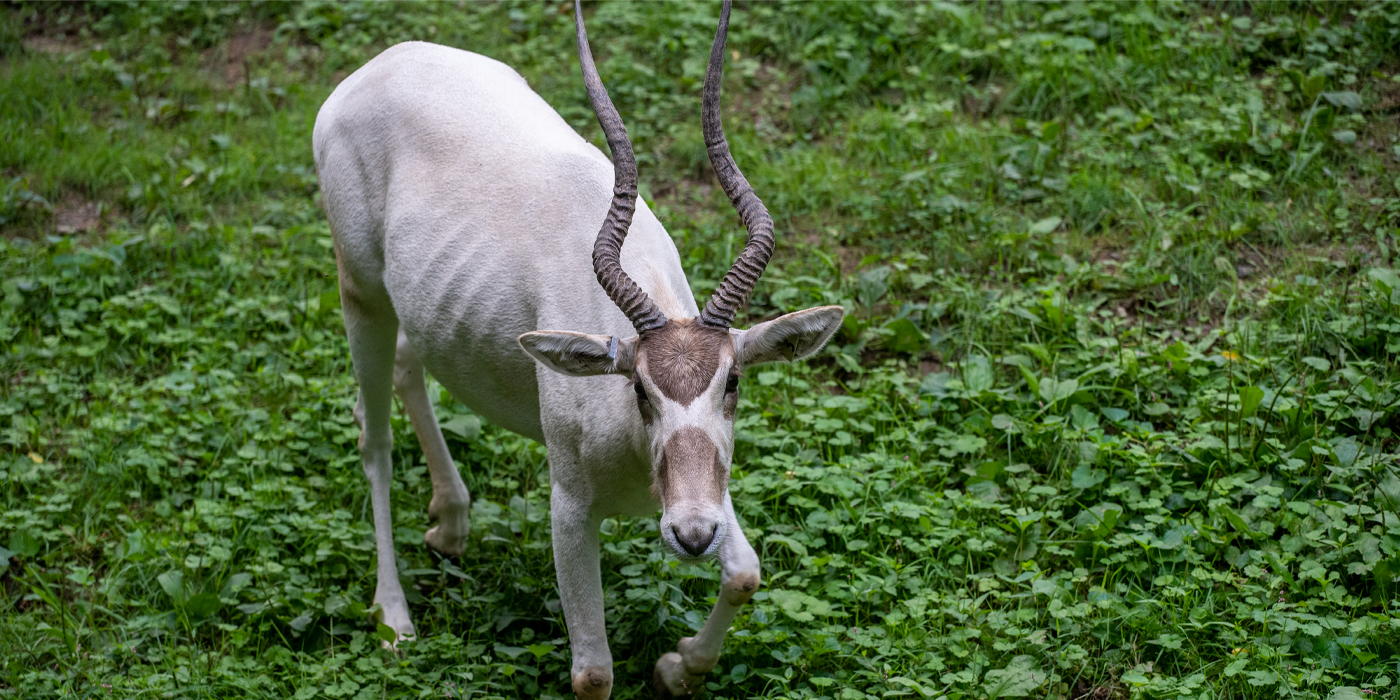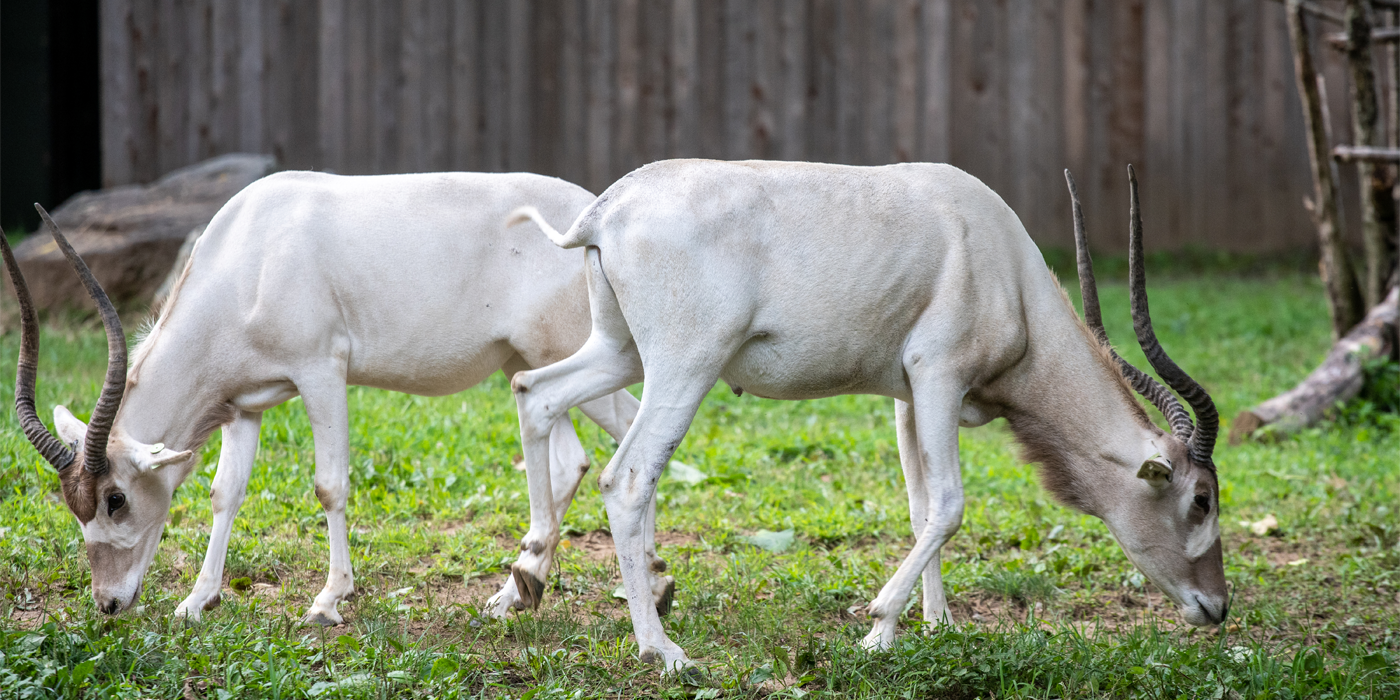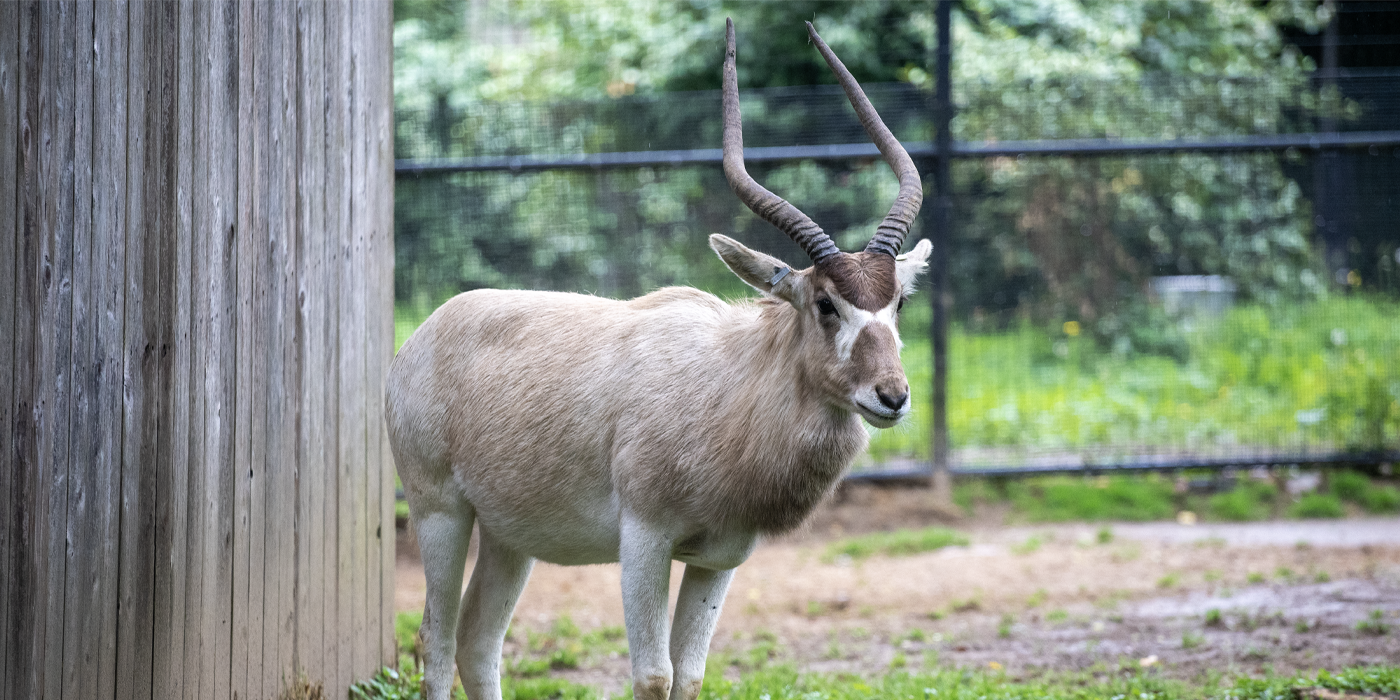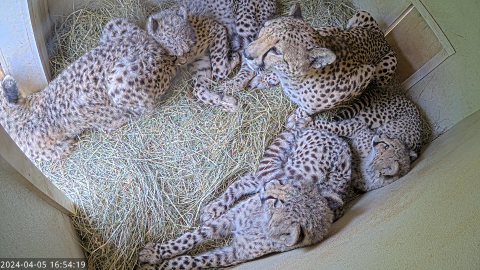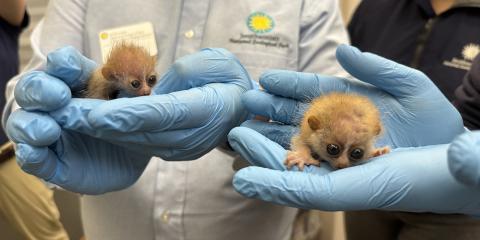Specialized to live in deserts, the addax is a shy, cautious antelope notable for its long, twisted horns. This species was once abundant throughout Northern Africa, and now inhabits just a tiny fraction of its former range.
Physical Description
Addax are stocky, sturdy antelopes with short, slender legs and short tails. The color of their coats varies based on the season; in the summer, their coats are white or very pale brown, while in the winter, their coats are gray, beige and even dark brown. Both males and females have short, shaggy manes, with dark patches between their long, twisted horns. They have white facial blazes that resemble an ‘x’ running between their eyes.
Size
Adults weigh between 130-275 pounds (60-125 kilograms) and have a standing shoulder height of about 33 to 38 inches (85-95 centimeters). Females are typically a bit smaller than males. Their horns are long, reaching up to 28–33 inches (70–85 centimeters).
Native Habitat
These animals are specially adapted to live in one of the harshest regions of the planet—the Sahara Desert. They can survive in dry, sandy deserts, as well as rocky hillsides, semi-arid grasslands and coastal plains.
Lifespan
The life span of the addax is unknown in the wild. In human care, individual males have lived up to 11 years and individual females have lived up to 14 years.
Communication
Addax can communicate with several vocalizations, including grunts, snorts and alarm calls. They also rely on scent marking; each of their four feet possesses a scent gland that can be used to mark the animal’s territory.
Food/Eating Habits
Like other antelopes, addax are herbivores. They survive by eating desert grasses, shrubs and succulents, receiving most, if not all, of the water they require from the plants they feed on. They can also collect morning dew from leaves. Their bodies are so efficient at conserving water that they excrete dry feces and concentrated urine.
Sleep Habits
Addax in the wild are typically most active at nighttime, choosing to sleep during the day while the sun as at its hottest.
Reproduction and Development
Addax are very social animals, traveling in groups (herds) of between five and 20 individuals. Herds usually form around one dominant male.
Conservation Efforts
Addax face numerous threats including drought, hunting and habitat loss from oil drilling and agricultural expansion. They are not fast runners and not particularly aggressive around humans, which makes them easy targets for poachers. By some estimates, around 100 animals remain in their native range. Only dedicated conservation efforts have prevented this animal from going extinct in the wild.
While addax are nearly extinct in the wild, sizeable populations of these animals exist in zoos, wildlife facilities, private collections and ranches in the United States, Europe and the Middle East. Conservation efforts to reintroduce addax to protected areas in their former range have involved animals raised in human care.
Help this Species
- Be a smart consumer! Avoid animal-skin products, even those marked “faux,” to ensure you’re not contributing to the illegal hunting of this species.
- Practice ecotourism by being an advocate for the environment when you’re on vacation. During your travels, support, visit or volunteer with organizations that protect wildlife. Shop smart too! Avoid buying products made from animals, which could support poaching and the illegal wildlife trade.
- Support organizations like the Smithsonian’s National Zoo and Conservation Biology Institute that research better ways to protect and care for this animal and other endangered species. Consider donating your time, money or goods.
- Are you a hunter? You can be an incredible ally for conservation! Check the conservation status of the animals you hunt and use methods that don’t impact other animals.
- Share the story of this animal with others. Simply raising awareness about this species can contribute to its overall protection.
- Try fundraising for conservation organizations in new and fun ways. You could donate your birthday to conservation, host a bakesale to benefit wildlife or Adopt a Species!
- Less is more. Cut down on the demand for resources by consuming less. Buy only what you need, and look for pre-owned or repurposed items before purchasing something brand new.
